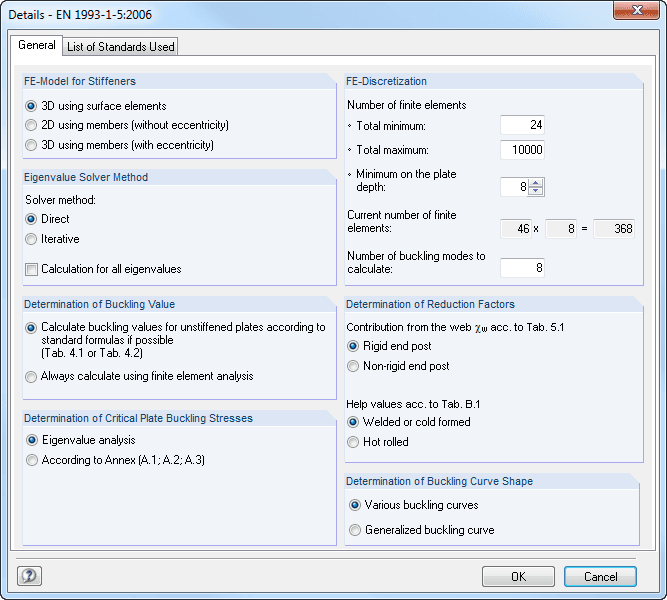The designs are carried out step-by-step by the eigenvalue calculation of the ideal buckling values for the individual stress states, as well as the buckling value for the simultaneous effect of all stress components.
The buckling analysis is based on the method of reduced stresses, comparing the acting stresses to a limit stress condition reduced from the yield condition of von Mises for each buckling panel. The design is based on a single global slenderness ratio determined by the entire stress field. Therefore, the design of single loading and subsequent merging using interaction criterion is omitted.
In order to determine the plate buckling behavior, which is similar to the behavior of a buckling member, the module calculates the eigenvalues of the ideal panel buckling values using freely assumed longitudinal edges. Then, slenderness ratios and reduction factors according to EN 1993-1-5, Ch. 4 or Annex B or DIN 18800, Part 3, Table 1. The design is then performed according to EN 1993-1-5, Chapter. 10 or DIN 18800, Part 3, Eq. (9), (10) or (14).
The buckling panel is discretized in finite quadrilateral or, if necessary, triangular elements. Each element node has six degrees of freedom.
The bending component of a triangular element is based on the LYNN-DHILLON element (2nd Conf. Matrix Meth. JAPAN – USA, Tokyo) according to the bending theory of Mindlin. However, the membrane component is based on the BERGAN-FELIPPA element. The quadrilateral elements consist of four triangular elements, while the inner node is eliminated.
